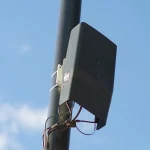ISP Sky Broadband UK Deploying IP Address Sharing via MAP-T UPDATE

Some customers of Sky Broadband have noticed, via our forum (here), that the ISP has quietly deployed a modern type of Internet Protocol (IP) address sharing called MAP-T that seems to be a notable improvement on other sharing solutions, like the often maligned Carrier Grade Network Address Translation (CGNAT).
Let’s start with a little context. The reason why some ISPs adopt IP address sharing is to help balance against dwindling stocks of older IPv4 addresses (e.g. 123.45.76.200), which are hard (expensive) to expand now that spare address space has run dry. So, while a provider like Sky Broadband may have no shortage of newer IPv6 addresses, they still need to work with v4s in order to ensure that customers can enjoy full access to the internet.
However, one way of stretching the life out of v4s is by sharing each address between multiple users, which is not universally popular as it tends to raise security concerns (i.e. some services partly manage or block access at specific IP level) and may cause connectivity problems under certain circumstances (e.g. port forwarding can be “fun“).
Advertisement
Admittedly, the chances are fairly good that most people might not care about changes like this, particularly as for the bulk of online tasks they’re often seamless to end-users. But if you work in IT / Networking or understand the significance, then you’re probably much more interested in what this means and also more likely to be impacted.
The above is particularly true when it comes to methods like CGNAT, which has become about as popular with some users as Hannibal Lecter at a school meeting. But there are other approaches that can achieve a better outcome, although some caveats will always remain with any approach to IP sharing.
Sky’s MAP-T
The latest development is that users of Sky Broadband’s latest Wi-Fi 6 capable Sky Max Hub router have noticed that their IP address is being shared by MAP-T (Mapping of Address and Port using Translation). The router launched a year ago as part of a paid WiFi booster add-on (here), although Sky do now appear to be shipping it to customers alongside their top FTTP broadband packages by default too (based on customer feedback to ISPreview).
Unlike CGNAT, which is more of a stateful solution (i.e. it has to track the state of every single lease, session, IP address assignment and more), MAP-T is primarily stateless. Put another way, it can do what CGNAT does (sharing addresses), albeit without the costly overheads (CPU, database and memory requirements) because it doesn’t have to keep track of every single lease, session etc. This provides v4-v4 connectivity over a v6 domain (explained more below).
Advertisement
Sky Italia has already deployed MAP-T in a forceful way (see this document for the technical details) and now Sky UK are doing the same, albeit via a more opportunistic approach. Crucially this is friendlier to things like port forwarding than CGNAT and in fact Sky UK’s approach adopts a degree of automated opt-out, which dynamically moves customers to a 1:1 (unshared) IP profile to allow for port forwarding and DMZ etc. (this is a difficult thing to do, especially at scale, so hats off to Sky’s network team). So far as we can tell, Sky appears to have two MAP-T profiles, either an 8:1 or 1:1 IPv4 address sharing ratio.
As one of our readers (hants) said: “Interestingly, I can affect the sharing ratio by defining port-forwarding configuration (via MySky) — if you pick a large range of ports, your sharing ratio reduces (which makes sense). However, even when configuring a DMZ, I still end up on MAP-T albeit with a sharing ratio of 1:1 — even in that scenario, the IPv4 address isn’t really terminated on my router.”
Sky Italia’s MAP-T Diagram

Advertisement
Sky’s approach to MAP-T seems to be trading a bit of IPv4 usage efficiency for a better customer experience, which is fine by us. But as we understand it, Sky has not yet announced any plans to introduce MAP-T on to their older routers, which may be because their latest kit (only the Sky Hub Max / Hub 6) and MAP-T is built on top of RDK-Broadband. Future routers will be the same too, but this is difficult to put on their older routers.
However, just to be clear, customers don’t strictly need the Sky Hub Max in order to harness MAP-T. The network itself is not restricting MAP-T support, so if, for example, someone were to connect an OpenWRT router (and install the required map package with opkg install map) then they will also get MAP-T.
At present, Sky is still believed to be in the middle of deploying this change, although we understand this should complete by the end of June 2024. We have asked Sky for a comment and hope to have something soon. In addition, we recently learnt that both Sky Stream and Sky Glass TV will start using IPv6 very soon (until now they’ve been limited to v4).
Sky is the first of the major UK ISPs to do this. In fact, so far as we can tell, they’re among the first of all home broadband providers – at any scale – to do it, with many others still focused on CGNAT for IP address sharing. Granted, for some people even MAP-T will still have its caveats and for that you’ll probably seek a Static IP (Sky don’t sell this to homes), but MAP-T is a nice improvement and Sky’s approach seems innovative.
UPDATE 14th June 2024 @ 7am
Sky UK has kindly responded to confirm the information we’ve posted above and that their solution will be able to proactively opt-out customers from IPv4-sharing where it will hinder their user experience, so customers should not be impacted by these changes.
In addition, they’ve also provided a more up-to-date diagram that shows how the UK implementation works. I’ve opted to leave the Sky Italia diagram above, as the two together help to give a bit of extra context for the differences. Finally, Sky confirmed that IPv6 support for Sky Glass and Sky Stream is currently being rolled out.
Sky UK’s MAP-T Diagram

Mark is a professional technology writer, IT consultant and computer engineer from Dorset (England), he also founded ISPreview in 1999 and enjoys analysing the latest telecoms and broadband developments. Find me on X (Twitter), Mastodon, Facebook, BlueSky, Threads.net and Linkedin.
« Police Arrest Two Men Over Illegal UK Phone Mast and Smishing






















































This will probably drive a lot of people who know their stuff to sign up with smaller ISPs who offer static IPs. Maybe not a bad development for the market overall.
I wonder if ipv6 is affected by this?
Why would you need to switch ISPs if you can just ask to opt-out?
There was a video about Sky Italy about this at IPv6 council in 2021.
https://www.youtube.com/watch?v=xKjkj249OXM
IPV6 usage continues to grow – https://www.google.com/intl/en/ipv6/statistics.html
How long will IPV4 last?
You clearly are an optimist. A year ago that link shows weekly peaks of just under 45%. Now those peaks are a bit above 47%. i.e. penetration has increased 2 to 3 points in a year.
Ten years about the peaks were about 4%. Over the last decade penetration has increased on average about 4 points per year. Unless anything changes it’ll be at least another decade before we start seeing anyone consider public services without IPv4 support and probably two decades before it’s common.
Anyone in the market to lease IPs?? How much for an /30
The smallest practical allocation you could have (and get an ISP to route) is /24 (256 addresses). Will set you back £7k-£10k.
Will this effect those WFH who connect to work systems using a VPN ?
It should not impact (most) VPN use. Modern consumer VPNs use TCP or UDP for transport, both of which work great using MAP-T (I’m using one currently). GRE or other more esoteric solutions based on older protocols might have issues. If you don’t know what that is, you probably won’t even notice the MAP-T technology in place.
Any word on Sky extending IPv6 support to Sky Mobile?
To be honest I don’t unstandardised much Tech, but has Sky changes To WiFi broken our Nest Thermostat which has lost connection to WiFi ? And will not rejoin.